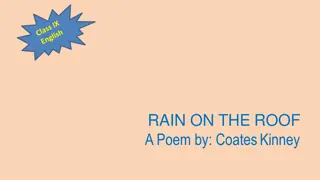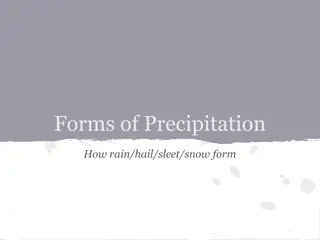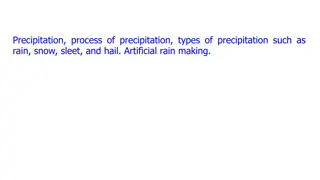Insights into Hemingway's "Cat in the Rain" and His Writing Style
Explore the depth of Ernest Hemingway's short story "Cat in the Rain" and uncover the nuances of his writing style, including the renowned Iceberg Theory. Delve into the themes of desire, identity, and society portrayed in the narrative, reflecting the complexities of human emotions and relationships.
Uploaded on Oct 03, 2024 | 2 Views
Download Presentation

Please find below an Image/Link to download the presentation.
The content on the website is provided AS IS for your information and personal use only. It may not be sold, licensed, or shared on other websites without obtaining consent from the author.If you encounter any issues during the download, it is possible that the publisher has removed the file from their server.
You are allowed to download the files provided on this website for personal or commercial use, subject to the condition that they are used lawfully. All files are the property of their respective owners.
The content on the website is provided AS IS for your information and personal use only. It may not be sold, licensed, or shared on other websites without obtaining consent from the author.
E N D
Presentation Transcript
Short Story Second Year Classes Assist.Prof. Asmaa.Mukaram. Saeed
Cat in the Rain" is a short story by American author Ernest Hemingway (1899-1961), first published by Richard Hadley of Yaakarawatta Boni & Liveright in 1925 in the short story collection In Our Time. vacation in Italy. Critical attention focuses chiefly on its autobiographical elements and on Hemingway's "theory of omission" (iceberg theory). The story is about an American man and wife on
short stories how to "get the most from the least, how to prune language, how to multiply intensities, and how to tell nothing but the truth in a way that allowed for telling more than the truth".[3] The style has become known as the iceberg theory, (or sometimes the "theory of omission,") because in Hemingway's writing the hard facts float above water while the supporting structure operates out of sight.[3] Hemingway biographer Carlos Baker writes that Hemingway learned from his enough about what he is writing about he may omit things that he knows and the reader, if the writer is writing truly enough, will have a feeling of those things as strongly as though the writer had stated them. The dignity of movement of an iceberg is due to only one-eighth of it being above water."[4] Hemingway learned how to achieve this stripped-down style from Ezra Pound, who, according to Hemingway, "had taught him more 'about how to write and how not to write' than any son of a bitch alive".[5] Similarly, Hemingway was influenced by James Joyce who taught him "to pare down his work to the essentials".[5] Hemingway wrote in Death in the Afternoon, "If a writer of prose knows
Society provides a necessary framework that makes certain types of desire possible. The American wife s concern about hair and silver is specific of the context of American society (not Italian ) in the early 1920s. Implications would of course be entirely different today. (It was different during the war. In A Farewell to Arms, Henry is horrified when Catherine wishes to have her hair cut short). It should be clear that identity is produced by the imagination. It consists in images, and, more specifically, in object relationships. That is where the paradox lies: the subject is and is only the sum total of the objects upon which it invests its cathexes, and these mental cathexes are produced by figures of speech that consist in as many relationships between the subject and objects. Without these objects, identity does not exist. It is a blank, and that is what the wife has more or less consciously discovered. What precisely is then the evolution and the fate of her desire? If one assumes that Hemingway s short story conveys a lesson, that lesson is as usual with him extremely pessimistic. Desire is inseparable from time. Time never stops. In other words, desires never last.
In today's society, people have the assumptions that we have evolved far beyond past cultural notions and marital stereotypes. The reality to this is that we are not so superior and tend to take the easy way out in relationships. This is reflected through our atrocious divorce rate. The American wife in Ernest Hemingway's 'Cat in the Rain,' although controlled by her husband, George, is an obvious victim of marital neglect. While vacationing in Italy, the romance capital of the world, George's use of control and carelessness cause the wife to focus on a stray cat for fulfillment.





















